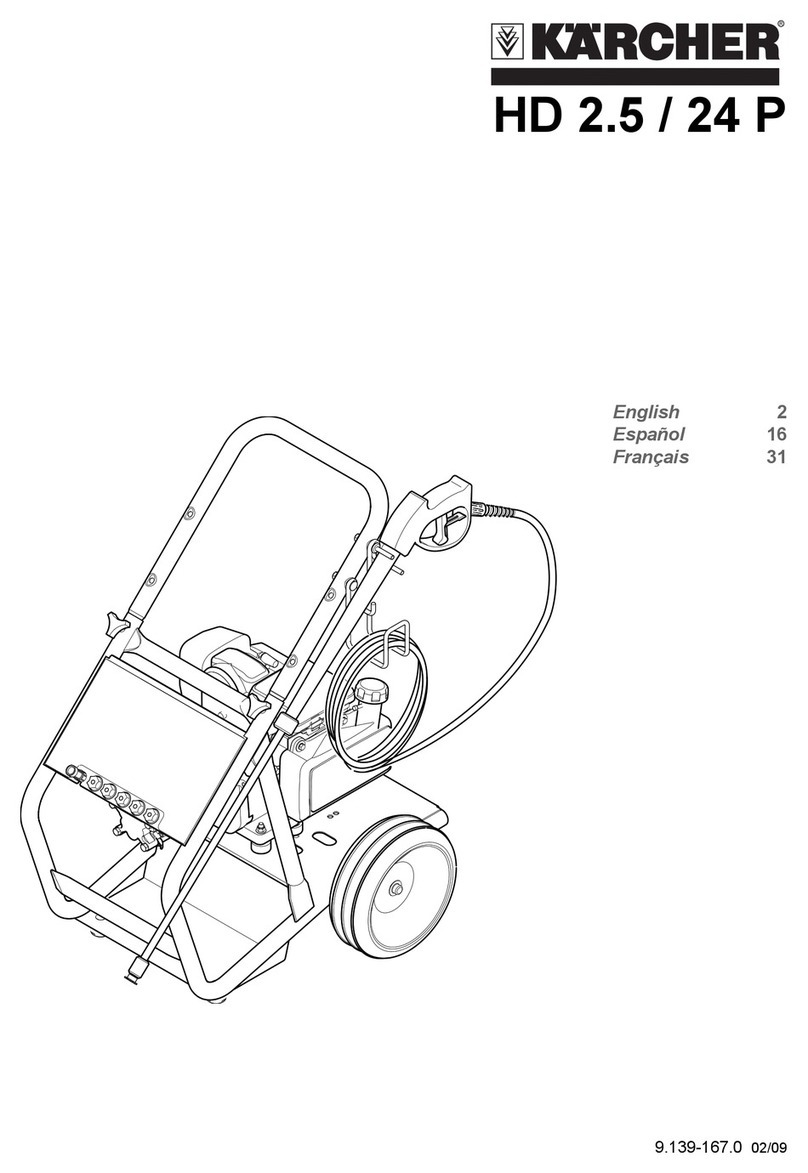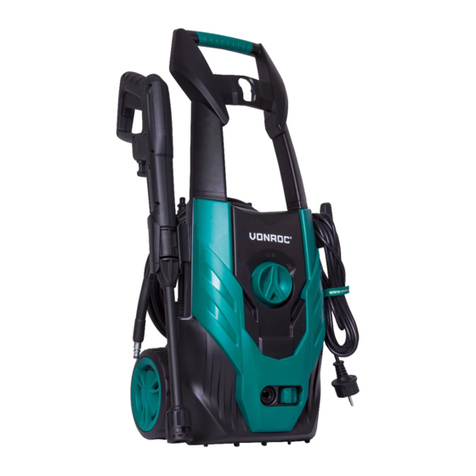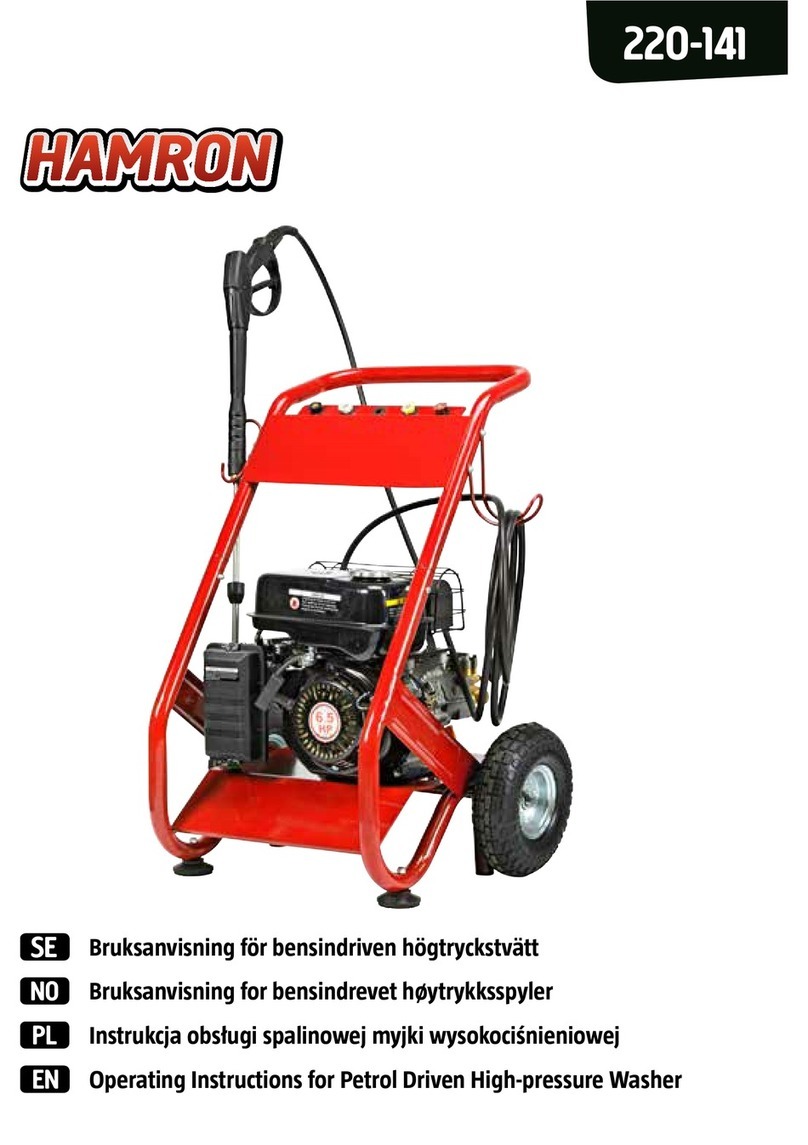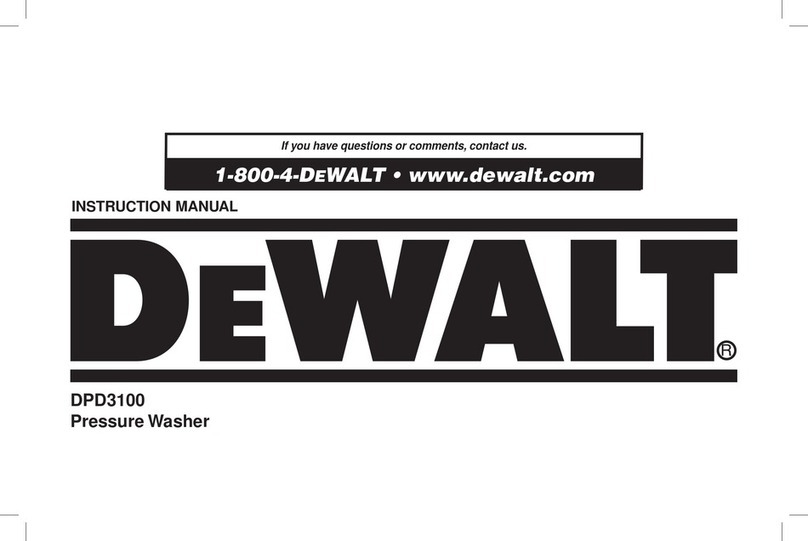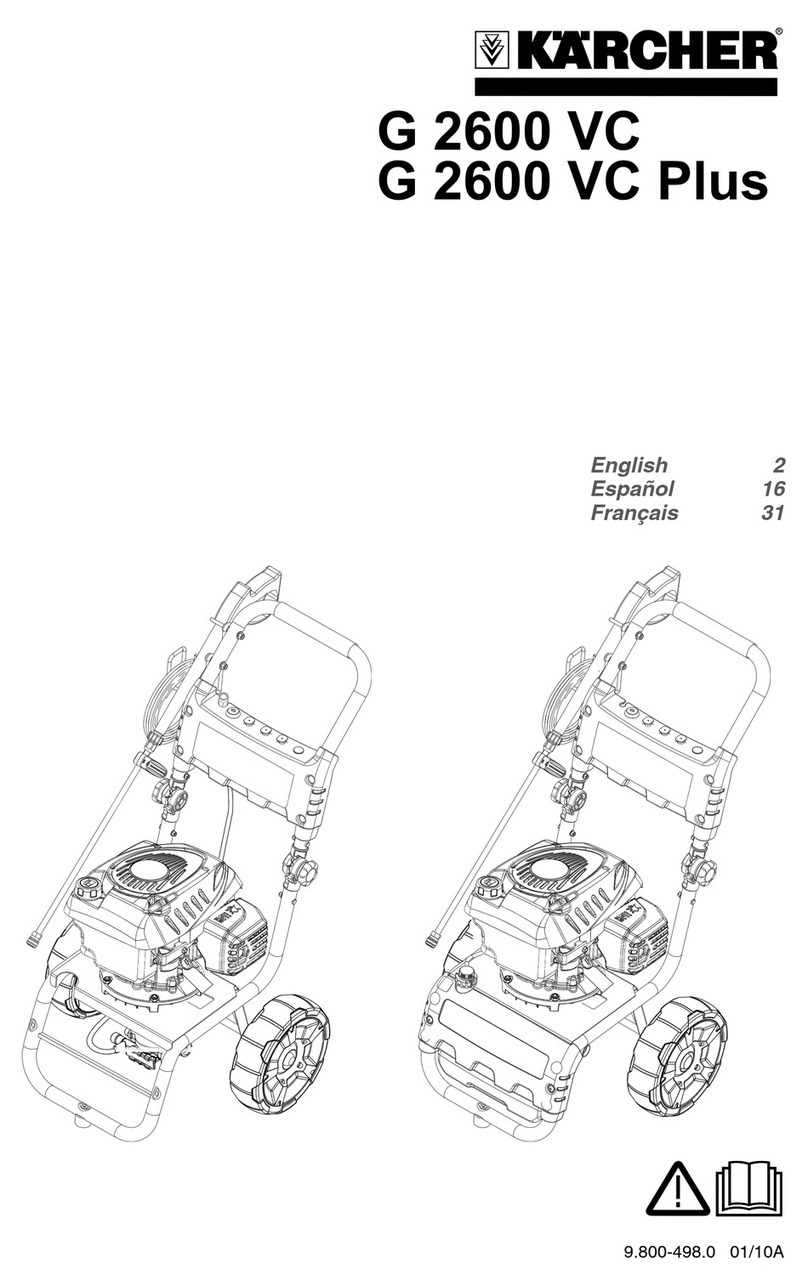Osaki Power Tools CPWO90 User manual

E C LOW VOLTAGE DIRECTIVE 73/23/EEC
E C ELECTROMAGNETIC COMPATIBILITY DIRECTIVE 89/336/EEC
E C MACHINERY DIRECTIVE 89/392/EEC
DECLARATION OF CONFORMITY
We hereby certify that OSAKI CPW090 Cold Water Pressure Washer
Complies with all the relevant provisions of the
EC Directives 73/23/EEC, 89/336/EEC, 89/392/EEC
Harmonised Standards Applied: HD400-1, HD400-2,
E 60335-1: 2002+A1+A11+A12+A2+A13+A14, E 60335-2-79:2009, E 62233: 2008.
Officia Agent
KENNEDY TOOLS
Wigston Works, Leicester, Eng and, LE18 2FS.
Su lied by an ISO9001 a roved com any
Signed:
Date: 13th May 2013 Name: Keith Read Position: Director, The Kennedy Group Ltd.
© The Kennedy Group Ltd. 05/13
UALITY GUARANTEE & WARRANTY
OSAKI POWE TOOLS carry one years manufacturers warranty.
OSAKI POWE TOOLS are designed & produced
to the highest standards & specifications
OSAKI POWE TOOLS are fully guaranteed against
faulty materials & workmanship
Should they be found to be defective, they will either be repaired or replaced
free of charge (fair wear and tear and/or misuse excepted).
Please retain supplier invoice as proof of purchase.
AVAILABLE FROM YOUR DISTRIBUTOR
OPERATORS MANUAL
COLD WATER PRESSURE WASHER
CPWO90
ORDER CODE
OSA-279-6100K

27
SAFETY INSTRUCTIONS ALSO AVAILABLE FROM OSAKI
Osaki Power Tools are committed to the Production of Quality Power Tools
that are designed for high performance and long service life.
If safety and maintenance procedures are observed they will last for many years.
115mm
Angle Grinder
Multi Purpose
Power Tool
Delta Sander
Orbital
Sheet
Sander
Orbital
Jigsaw
160mm
Circular
Saw
12, 14.4
& 16.8 Volt
Cordless
Drill/Screwdrivers
Man, Earth and the Universe
are forces that create an
immovable centre of balance . . . the
balance of power
“
”
GENERAL SAFETY
l
To reduce the risk of injury, close supervision
is necessary when a product is used near
children. Do not allow the pressure washer to
be used by children or people who are not
familiar with it.
l
Know how to stop the product and bleed the
pressure quickly. Be thoroughly familiar with
the controls.
l
Stay alert and watch what you are doing.
l
Do not operate the product when tired or
under the influence of alcohol or drugs.
l
Keep operating area clear of all people and
clutter.
l
Do not over reach or stand on an unstable
support. Keep a good footing and balance at
all times.
l
This product must be grounded.
l
When working outdoors only use suitably
approved extension cables with a minimum
conductor cross section of 1.5mm2. The plug
connectors must have earthing contacts and
be waterproof.
l
Do not start and run the machine in the rain
or stormy conditions. Keep all connections
dry and off the ground. Do not touch the plug
or sockets with wet hands. It is very
important not to let water leak into the
machine.
l
The machine should be switched off if it is
not used for periods longer than 3 minutes.
l
Maintain a constant water supply when the
machine is running. Without water circulation
damage will be caused to the sealing rings of
the machine.
l
It is necessary to turn on the spray lance
within one or two minutes after the machine
has been started. Otherwise, the
temperature of the circulating water within
the machine will soon rise to a critical point,
which will cause damage to the sealing rings
inside the machine.
l
Do not start and run the pressure washer in
a place which is excessively cold.
l
This device has been designed for only using
cleaning water. Do not use corrosive
chemicals.
l
Hold the spray lance firmly when in use as
there is a chance it might swing back with
the force that is inside it.
l
Do not use the appliance within the range of
persons unless they are wearing protective
clothing.
l
Do not wash any objects which are a health
hazard e.g. asbestos.
l
High pressure jets can be dangerous if
subject to misuse. The jet must not be
directed at persons, live electrical equipment
or the appliance itself. Pressure washers
should not be pointed less than 30cm away
from tyre walls or tyre valves, as it may be
possible to damage them.
l
Do not direct the jet against yourself or
others in order to clean clothes or footwear.
l
Disconnect from the electrical power supply
before carrying out user maintenance.
l
To ensure the appliance safety, please use
only original spare parts from Osaki. Do not
use the machine before you have changed
them if they are damaged.
l
Stay alert at all times. Watch what you are
doing and use your common sense. Do not
operate the power washer when you are
tired.
l
Store the power washer in a dry, secure
place, away from children.

63
SERVICE & REPAIR SPECIFICATIONS
Model Number CPW090
Nominal Voltage 230v
~
50 Hz
Power Consumption 1500W
Working Pressure 90bar (1305PSI)
Maximum Permissible Pump Pressure 160bar (2320PSI)
Working Flow Rate 6 1/min
Maximum Water Supply Pressure 0.4MPa
Motor Rotation Speed 2800rpm
Maximum Water Temperature 50°C
Noise Le el <93db(A)
Vibration Le el 0.9m/s2
Water Protection IPX5
Hose Length 5m
Dimensions 380 x 270 x 270mm
Weight 12kg
ACCESSORIES
FEATURES
Jack Spray Lance & Adjustable Spray nozzle
OSA-280-1701W
Hose
OSA-280-1702W
Handle
OSA-280-1703W
Detergent Bottle
OSA-280-1704W
Repair work on the Osaki Power Washer can on y be carried out by a trained service engineer. A
comprehensive in house repair and service faci ity is avai ab e through your oca agent.
SWITCH
DETERGENT BOTTLE
JACK SPRAY LANCE
HOSE
HANDLE
ADJUSTABLE SPRAY NOZZLE
WATER OUTLET
WATER INLET

4
TROUBLE SHOOTINGOPERATING INSTRUCTIONS
5
USING THE POWER WASHER
Connect the outlet hose to the washer and connect the spray gun to the outlet hose.
Connect nozzle and nozzle extension.
Check gauze filter is clear of any blockage.
Connect the water supply hose.
Check that the hose has no kinks in it.
Turn on water and check for leaks.
Depress trigger to allow air to be expelled through the pump and hoses, lock trigger.
Plug in machine and turn on side switch.
Unlock trigger and use the pressure washer.
ADJUSTABLE SPRAY NOZZLE
Water may be sprayed out from the spray nozzle either linearly or in fan shapes. Turn on the pressure
washer first and then adjust the nozzle by turning the end of the nozzle in a clockwise or anti clockwise
direction.
MAINTENANCE
The Osaki Pressure Washer is maintenance-free however regular inspection of the water inlet filter on the
side will prevent any blockage restricting the water supply to the pump.
LONG TERM STORAGE
Frost can destroy an incompletely emptied unit. The pressure washer must be stored in a frost-free
environment.
After long term storage without operation, it is possible that scales have formed inside the machine, making it
difficult to start. In such conditions it is recommended to turn off and disconnect the power supply and rotate
the motor by hand. This is achieved by putting a screwdriver through the ventilation grill and turning the motor
several times. This will help to avoid excessive current draw on the motor and the power supply.
When switched on
the machine will
not start working.
Fluctuating
ressure.
Water leaking from
the um .
The motor sto s
suddenly.
The um does
not reach the
necessary
ressure.
Plug is not well connected or
electric socket is faulty.
The main voltage is
insufficient and is lower than
minimum requirement.
The um is stuck.
Thermal safety switch has
tri ed.
Pum sucking air.
Valves dirty or stuck.
Pum seals worn out.
Seals worn out.
Thermal safety switch has
tri ed due to over heating.
Water inlet filter is clogged.
Pum sucking air from
connections or hoses.
Suction/delivery valves are
clogged or worn out.
Lance nozzle incorrect or worn
out.
Check lug, socket and
fuses.
Check that the mains voltage
is adequate.
Refer to after storage
instructions.
Switch off the unit and let the
motor cool for a few minutes.
Leave the lance o en.
Check that hoses and
connections are airtight.
Clean valves.
Check and re lace, or refer to
dealer.
Check that the main voltage
corres onds to s ecifications.
Switch off the unit and let it
cool for a few minutes.
Clean the water inlet filter.
Check that all su ly
connections are tight.
Check that the water feeding
hose is not leaking. Clear or
re lace valves.
Check and/or re lace.
FAULT LIKELY CAUSE SOLUTION
Table of contents
